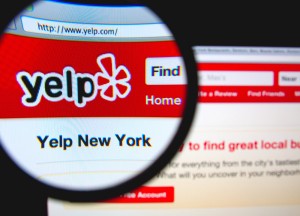E-commerce, as you’ve probably heard, is surging. Buoyed by the pandemic, the sector has shown little sign of slowing down even as the world has opened back up. In fact, estimates suggest U.S. retail e-commerce sales will top $1 trillion this year, up 9.4% over 2021. The question now for companies is whether their logistics tools can keep pace with a customer base that wants things faster and cheaper.

“With existing software it’s nearly impossible to manage all the complexities of delivery logistics, including shipping with multiple carriers, offering same-day delivery, and shipping inventory from multiple locations including store branches,” says Avi Moskowitz, CEO at PrettyDamnQuick, a software logistics company. However, this change in consumer behavior also comes with a major advantage for businesses: A wealth of data that can help companies make better and more informed decisions. Many companies have used such data to improve their advertising and sales strategies. Why not their logistics operations?
“With the right tools, companies can completely revamp their logistics, making it uber simple for people to order products from any part of the world,” says Dhruvil Sanghvi, CEO of LogiNext. “Then brands can deliver on that expectation with a world-class customer experience.”
Sanghvi’s company, LogiNext, provides AI-powered SAAS solutions for enterprise logistics and management. They help major brands like McDonald’s, Starbucks, and UPS with tasks like tracking and optimizing the management of vehicles and personnel in the field and providing insights based on predictive and big data analytics. Headquartered in New York, the company currently serves more than 200 large enterprises in over 50 countries and powers millions of orders every day.
LogiNext, along with companies like Bringg, Project 44, and PrettyDamnQuick is part of a new wave of software solutions powering the future of retail delivery. There’s also Bringg, an Israel-based open delivery management platform that helps businesses “grow delivery capacity, reduce last mile costs, and provide branded customer experiences.” And Project 44, a Chicago-based logistics technology company that “provides a visibility solution to span the entire shipment workflow.” On the other hand, Israel-based PrettyDamnQuick, simplifies the chaotic delivery logistics chain of events by unifying all the tools and processes into one online platform—from checkout through delivery—with a streamlined workflow that anybody can learn in minutes.
While some companies like Tesco have chosen to build their own software solutions, SAAS platforms like LogiNext, Project44, Bringg, and PrettyDamnQuick provide tools that can be adapted to a variety of different companies across different industries. In fact, Sanghvi claims LogiNext may reshape the way we do delivery altogether. In the same vein, Moskowitz says by streamlining the entire checkout-to-delivery workflow with a simple app like PrettyDamnQuick, online retailers can consistently and effortlessly deliver orders the same or next day and even transform fulfillment into a profitable sales growth engine.
Reshaping Home Delivery Systems
Technologies like mobile apps and better data collection have increased the efficiency of home deliveries, but many companies still suffer from a lack of digitization and inefficient on-site technology systems. This creates inefficiencies in the company’s driver management, which can increase their costs, decrease the number of orders they can complete, and increase their impact on the environment. For instance, if one neighbor orders a burger from KFC and another orders a Starbucks coffee through UberEats, this would require two drivers to go separately, fetching each order and delivering it.
But with LogiNext, which processes vast amounts of information in real time, the driver management system would take into account the fact that two people very close by have ordered from two restaurants in the vicinity. It would also factor in data like the weather and traffic conditions at that time and the preferences of delivery drivers and end customers. Whereas previous systems were more dispatcher-centric, these systems are focused on the drivers and can adapt to unforeseen events.
This type of solution can be especially helpful for large enterprises with a variety of different franchises in different locations. AmRest, the leading European multi-brand franchise restaurant operator, is one of the enterprises that has put this new logistics software to use.
Krystian Kwiatkowski, Global Franchise Director at restaurant operator AmRest, told Fast Company that LogiNext’s solution has helped AmRest to ramp up its productivity. “We can now handle more orders in record time,” he says, adding that “beyond bringing increased profitability to AmRest, it offers customers a fast delivery service of high-quality products they can trust, giving us an edge above our competitors.”
Beating Supply Chain Disruptions
Many companies have struggled to adapt to the quick and unexpected economic changes brought on by the pandemic, causing employee shortages and supply chain disruptions in a number of different industries. According to Moskowitz, the delivery expectations of online shoppers are increasing and same-day delivery is shifting from a nice-to-have option to a must-have option at checkout. Sanghvi sees key barriers to adaptability like manual, inefficient processes, and outdated technology as some of the causes of these disruptions.
While a simple navigation system like Google Maps might work for a commuter, an enterprise requires something much more sophisticated. Enterprises must keep track of hundreds of stops, different modes of transport, and other planning constraints. LogiNext’s team of data scientists and engineers has tracked more than 25 billion location data points in order to build a comprehensive mapping system to help make deliveries smoother. These can be first-mile movements between factories and warehouses, middle-mile movements between hubs, or last-mile movements to the end customer.
SaaS systems like LogiNext don’t only help optimize the management of delivery drivers, however. LogiNext pairs its AI-powered technology with a series of interconnected web and mobile applications. This creates a single platform that shippers like UPS and FedEx can use to keep track of a variety of areas, from sorting and loading packages to managing carriers and sending real-time notifications to the customer. And unlike company-specific systems, companies like LogiNext are constantly using data from across industries to improve their models and offer better quality service.
The Future of Delivery
Sectors like food and beverage, retail, e-commerce, and courier companies are already using AI systems to increase their efficiency. With comprehensive software solutions and real-time data, companies can respond to unexpected circumstances, making them less vulnerable to the type of supply chain issues that have disrupted the economy in the past year. By using their resources more efficiently, companies will also be able to compensate for the labor shortages they are experiencing today.
LogiNext’s carrier integration marketplace is a big step in this direction.
Using this technology, brands can integrate with aggregators like UberEats, Grab and Deliveroo at the click of a button, all on a single platform. Sharing fleets of drivers, dynamic order allocation, and end-to-end transportation visibility make it possible to ease out many of the current pain points and work towards a more seamless global supply chain.
“The rate at which things are changing is massive,” says Sanghvi. “Think of autonomous factories, think of underground parcel delivery systems, self-driving cars, drones, and more.”
The success of logistics software solutions like LogiNext, Project44, Bringg, and PrettyDamnQuick has the potential to make big changes in the e-commerce and retail industry. AI and other technologies can help companies keep up with the ever-increasing complexity of the supply chain, increasing their agility and flexibility, and delivering better outcomes to consumers.
(17)






